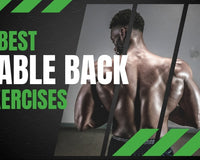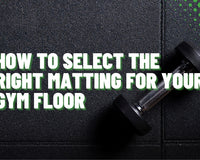If you’re someone who wants to build a well-rounded and stronger chest, you probably are probably going to incorporate bench press into your chest day routine.
With that being said, there are several variations of the bench press to consider, with the decline bench press being one of the best at creating that rounded look.
Although not many choose the decline bench press as their primary form of benching, it is worth considering.
On that note, the decline bench press is excellent for working various muscles in your upper body, not just your chest.
Let’s take a look at the muscles worked by decline bench press and how to perform the exercise correctly.
What Is a Decline Bench Press?

The decline bench press is a variation of the bench press. However, whereas the regular bench press has you lying flat on your back on a level surface, the decline bench press has you in a decline position.
Don’t mistake this for an incline position, which is where you are still upright, but at about a 45-degree angle with your legs lower than your head.
On the other hand, a decline bench press has your head lower down than your legs, at roughly a 30-degree angle, which means that you have to work extra hard against gravity to perform the bench press.
Related Post: 7 Best Cable Chest Exercises
How to do Decline Bench Press

Doing a decline bench press is relatively easy, but it needs to be done the right way to build muscle while avoiding injury. Follow the instructions listed below to perform a decline bench press.
- Pick a decline bench at the gym or adjust your home bench to a decline position. Remember, this means that your feet will be higher up than your body and heady. Keep in mind that real decline bench press benches feature a special attachment at the bottom that allows you to hook in your knees and legs, so you don’t slide down.
- The first step is to choose an amount of weight that is suitable for you. Of course, when first starting, it’s best to start light. Remember, the bar itself already weighs 40+ pounds, so if you are starting out, you might not need to add much more.
- Lay down on the bench and make sure to hook your legs in properly so you don’t slide off the bench. Keep your back flat on the bench and make sure to keep your spine straight.
- Grip the barbell using an overhand grip, which means that your knuckles are facing backwards or towards you, with your palms supporting the bar. Something to keep in mind is that the closer together your hands are, the more it will work the inside of your chest as opposed to the outside. If you’re just starting off, hold the bar slightly narrower than shoulder width.
- Unrack the barbell by lifting it up off the supports, and then slowly lower it down towards your chest in a controlled manner, but don’t let it touch your chest. Hold this position for a second or two and then use your chest and arms to power it back up to the starting position
- Aim to complete anywhere between 8 and 12 reps for up to four sets.
Decline Bench Press Muscles Worked

As you are about to find out, the decline bench press is an excellent exercise for your upper body, mainly your chest, but so much more.
Pectorals – Lower Pectoral Muscles
Although the decline bench press does work out all parts of your pectoralis muscles, it is especially suited towards the lower pectorals, specifically the pectoralis major.
If you were to try and picture this, imagine the part of your chest around and below your nipple, down to your ribcage. The pectoralis major is an important muscle for any kind of pushing motions.
Related Post: Close Grip Bench Vs Wide Grip
Triceps Brachii
The next major muscle worked out by the decline bench press is the triceps. The triceps, the horseshoe shaped muscle on the outer side of your upper arm, work very hard at pushing the barbell upwards.
Aside from your chest muscles, it’s your triceps that take the brunt of the weight. Remember that your triceps make up the majority of your upper arm, making the decline bench press a great way to build upper arm muscle.
Anterior Deltoids
Although not the number one muscle involved in doing the decline bench press, your anterior deltoids also play a significant role in this exercise.
Your anterior or front deltoids are involved in many lifting and pushing actions. If your palms are facing down and you lift your arms up, that’s your anterior deltoids doing the work. Your delts also help stabilize your upper body during this exercise.
Serratus Anterior
A muscle that many may not be familiar with, the serratus anterior is attached to the side and top of your ribcage, and it’s essential for stabilizing yourself during this exercise.
Latissimus Dorsi
Although your lats aren’t the main mover as far as the decline bench press is concerned, they are important for stabilizing purposes.
Your lats are vital for stabilizing your upper body during a variety of exercises, and they help with lifting your arms upwards as well.
Related Post: What is Larsen Press and How Can it Help Your Bench?

Biceps Brachii
Once again, here we have another muscle that is not directly involved in the push or the lifting process, but your biceps are still crucial for stabilizing things during the lift.
The decline bench press isn’t an exercise you’d do to grow bigger biceps, but it still works them out to a certain degree.
Core Muscles
Finally, when you do a decline bench press, especially because your legs are up higher than your body, it requires your core. Although decline benching won’t give you those killer abs you’ve been looking for, it certainly doesn’t hurt either.
Related Post: Guide to BodyBuilding Poses
Rounding Up

At the end of the day, the decline bench press is an excellent exercise to do for a variety of upper body muscles.
From your pecs and triceps to lats, bicpes, and more, the decline bench press is an exercise worth trying.





